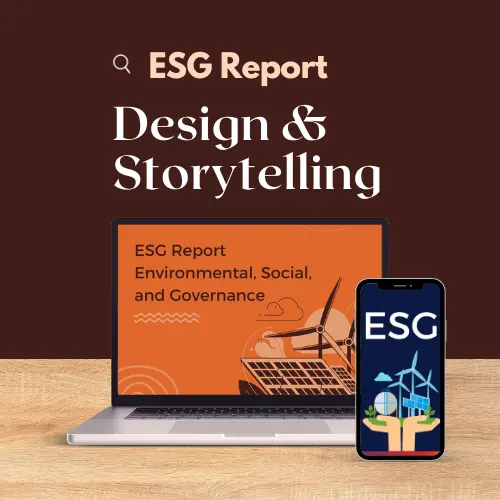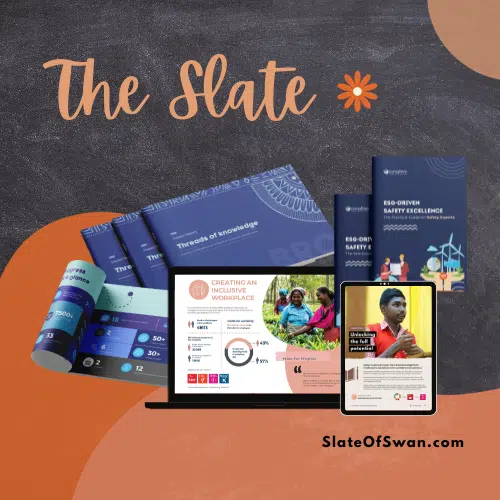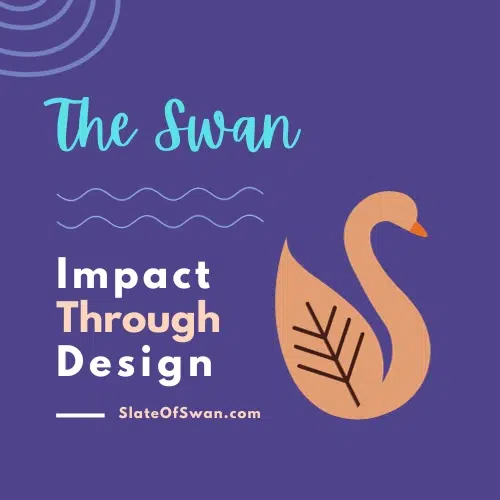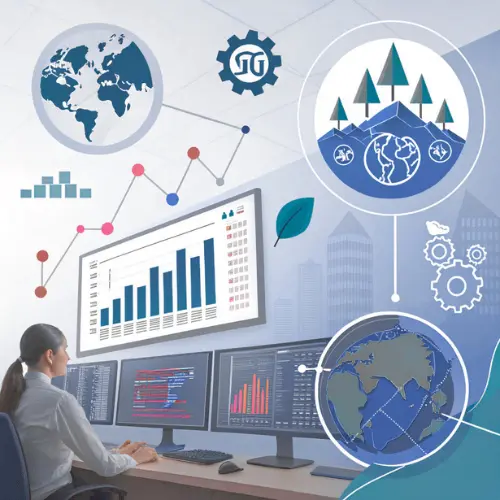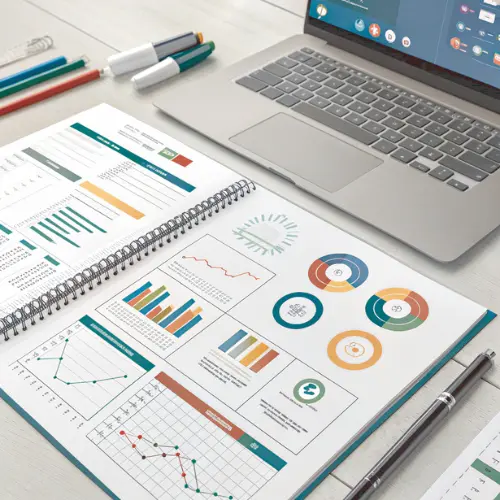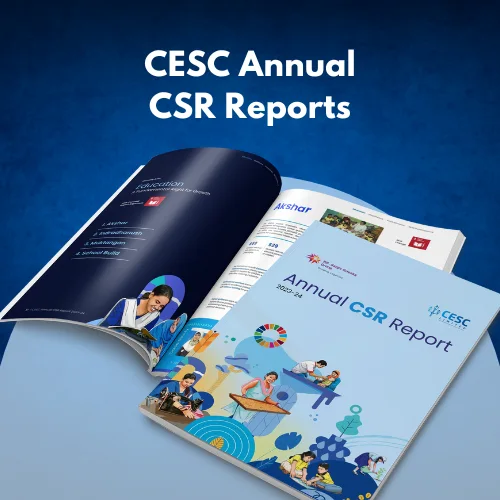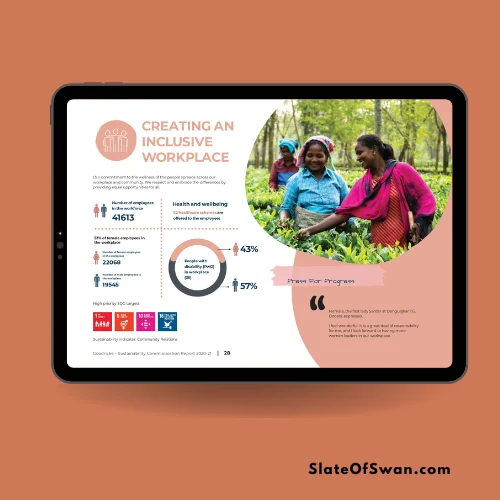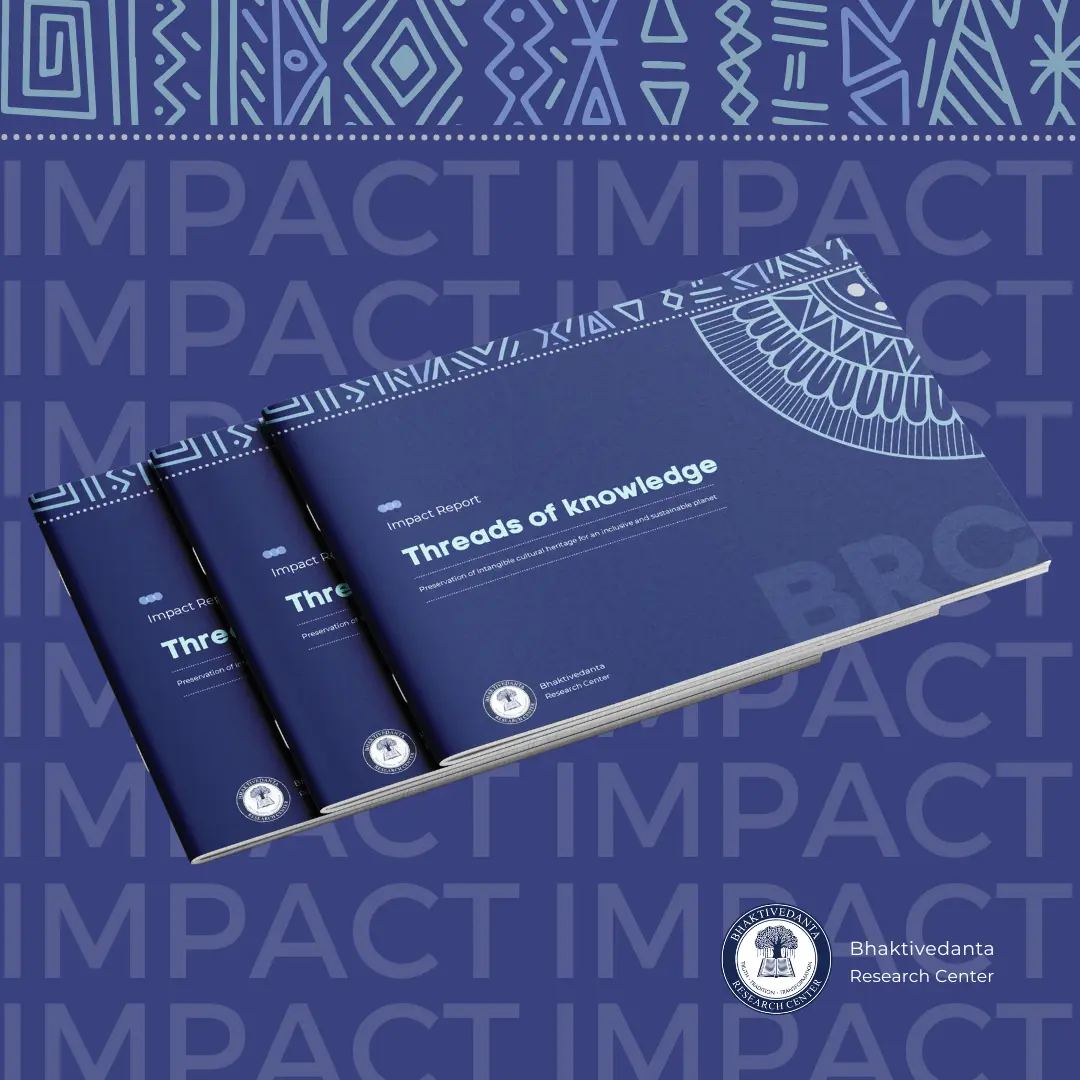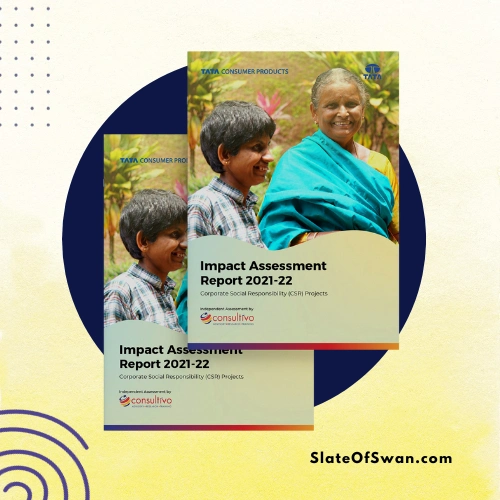From Paper to Digital: The Evolution of Corporate Reporting in the Digital Age

Uncover the evolution of Corporate Reporting and learn from our rich experiences as a leading Corporate Report Design Agency.
In the fast-paced digital age, the way companies communicate their financial performance and corporate governance has undergone a radical transformation.
Gone are the days when thick paper reports were the norm. Today, businesses have embraced the power of digital platforms to present their corporate reporting in a more dynamic and accessible manner.
In this blog, we delve deeper into the fascinating world of corporate reporting in the digital age and explore the countless possibilities it offers for businesses to communicate more effectively.
The evolution from paper to digital has revolutionized how companies showcase their achievements, challenges, and future strategies.
With interactive infographics, videos, and immersive digital experiences, corporate reporting has become an engaging journey for stakeholders. This shift enhances transparency and allows companies to reach a wider audience and make their reporting more interactive and user-friendly.
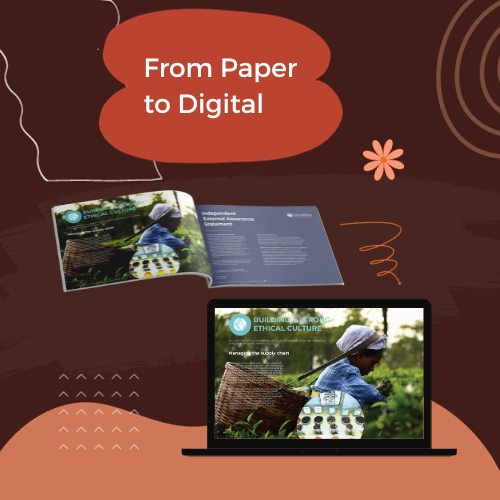
The shift from paper to digital corporate reporting

The advent of the digital era has significantly shifted how companies report their financial and non-financial information. Traditional paper-based reports were often lengthy, static, and lacked interactivity. They limited the ability of companies to communicate their story to a broader audience effectively.
However, with the rise of digital platforms, companies now can create more engaging and dynamic reports that can be easily accessed and shared.
Digital reporting allows companies to present their information in a more visually appealing and interactive format. By leveraging the power of infographics, charts, and graphs, they can visually represent complex data in an easily understandable way to stakeholders. This not only enhances the report’s readability but also enables stakeholders to quickly grasp key information and insights.
Furthermore, digital reporting offers the advantage of real-time updates. Unlike traditional paper reports, which had to be printed and distributed, digital reports can be easily updated and accessed online. This ensures stakeholders have access to the most up-to-date information, allowing for more informed decision-making.
In the realm of Digital Reporting, advancements in technology have given rise to five avant-garde formats, each catering to unique user experiences and functionalities.
Pdf format for Corporate Reporting
First, there’s the traditional PDF, a widely recognized and easily shareable format, offering consistency across various devices.
Interactive Pdf format of Corporate Reporting
Next is the interactive PDF, which elevates the standard PDF experience by embedding links, videos, and interactive charts, allowing for a more dynamic reader engagement.
Flipbook format for Corporate Reporting
Flip books, on the other hand, mimic the tactile experience of flipping through a physical book but in a digital environment, providing an intuitive interface often adorned with animated page-turning effects.
The Consultivo flipbook for Goodricke Group is a Sustainability Communication Report that delves into the impact of the company’s CSR endeavors, showcasing their commitment to sustainable practices and positive contributions to the tea industry, communities, and the environment.
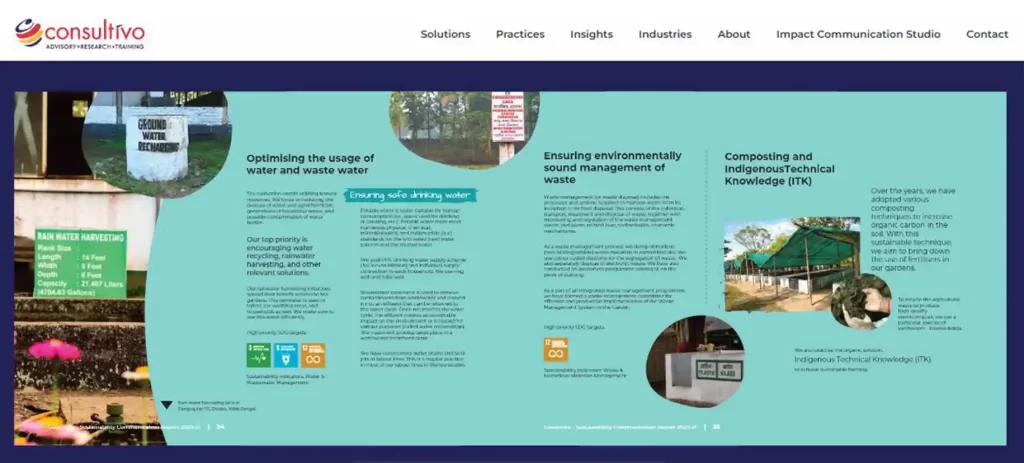
Microsite format
Lastly, microsites stand out as dedicated miniature websites specifically designed for reports. They offer deep customization, interactivity, and are often complemented with rich multimedia content, ensuring a holistic and immersive user experience.
Facilitating outstanding ease of navigation and superior interactivity, the Rainforest Alliance Annual Report microsite offers a truly personalized, cutting-edge reading and viewing experience.
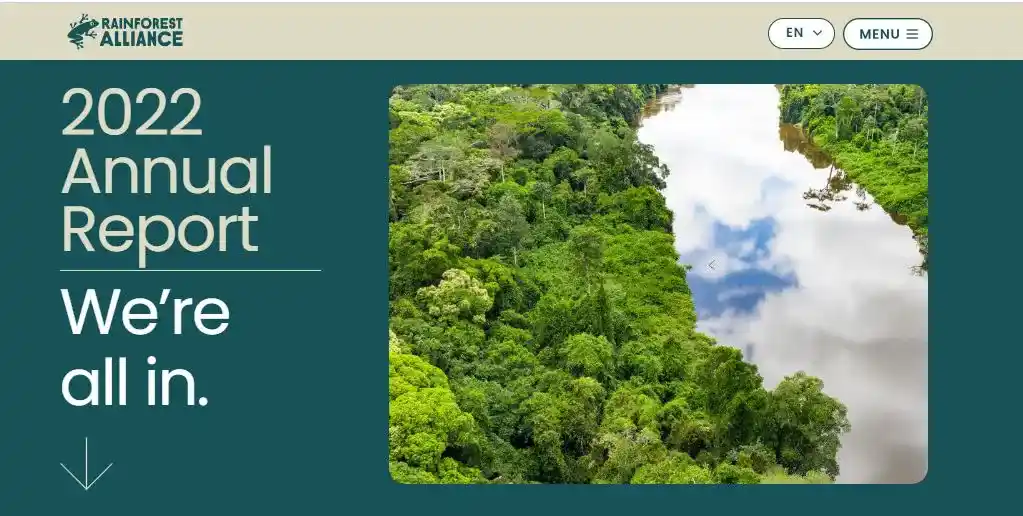
The Cargill 2022 ESG report is a pulsating example of the visual extravaganza that the microsite format allows a report to become.

Video format of Corporate Reporting
Each of these formats has its strengths, offering organizations diverse avenues to present their content in the most compelling manner.
The Apple film about Mother Nature showing up to review the company’s progress on sustainability is a stunning reminder of the effectiveness of the video format in conveying data and stories of real-world impact.
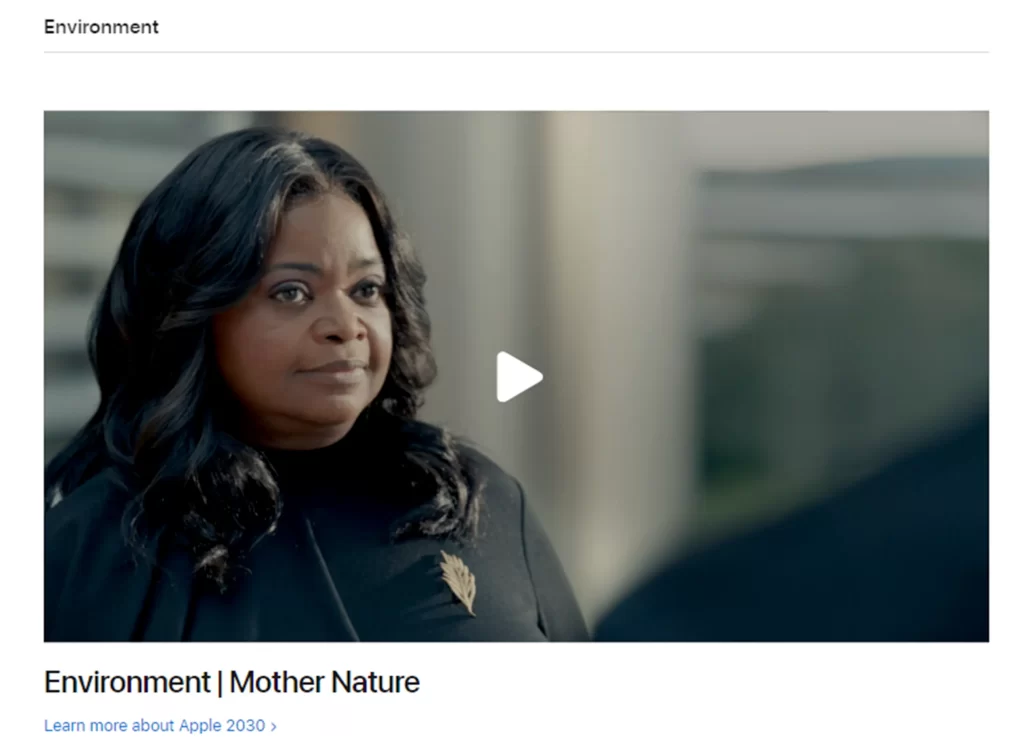
Advantages of digital corporate reporting

The shift from paper to digital reporting brings numerous advantages for companies and stakeholders. One of the key advantages is enhanced accessibility. Digital reports can be accessed from anywhere, at any time, as long as an internet connection exists. This means that stakeholders no longer have to rely on physical copies or wait for reports to be mailed. They can simply log in to a secure online portal and access the necessary information.
Another advantage is the ability to create more engaging and interactive reports. Digital platforms provide companies with the opportunity to incorporate multimedia elements such as videos, animations, and interactive infographics. This not only makes the report more visually appealing but also allows stakeholders to interact with the information in a more meaningful way. For example, they can explore different report sections, click on interactive charts to view detailed data, or watch videos that provide additional context.
Additionally, digital reporting allows for greater customization and personalization. Companies can tailor their reports’ content and format to suit their stakeholders’ specific needs and preferences. For example, they can provide options to download specific sections of the report, choose different visualizations, or customize the level of detail displayed. This level of customization ensures that stakeholders receive the information that is most relevant to them, enhancing their overall experience.
Challenges of transitioning to digital reporting

While the benefits of digital corporate reporting are undeniable, the transition from paper to digital is not without challenges. One of the main challenges is ensuring data security and privacy. As digital reports are stored and accessed online, companies must take appropriate measures to protect sensitive information from unauthorized access or data breaches. This requires robust cybersecurity protocols and encryption techniques to safeguard the integrity and confidentiality of the data.
Another challenge is the digital divide. Despite the widespread use of digital technologies, some segments of the population may not have internet access or may not be as comfortable with digital platforms. Companies consider making their digital reports accessible to all stakeholders, including those with limited internet access or technological literacy. This may involve providing alternative formats, such as downloadable PDFs or offering support and training for stakeholders who need assistance navigating the digital platform.
The role of technology in digital reporting

Technology is crucial in enabling companies to transition to digital reporting and create compelling digital experiences for stakeholders. From data analytics tools to content management systems, companies have a wide range of technologies to streamline the reporting process and enhance the overall quality of their reports.
Data analytics tools, for example, allow companies to analyze and visualize large volumes of data, making it easier to identify trends, patterns, and insights. These tools can help companies identify key performance indicators (KPIs), track progress against targets, and present data in a visually compelling way. This not only enhances the readability of the report but also enables stakeholders to grasp essential information and insights.
Content management systems (CMS) are another essential technology for digital reporting. CMS platforms enable companies to create, manage, and publish content in a centralized and organized manner. They allow companies to update and customize their reports, track changes, and collaborate with multiple stakeholders. CMS platforms also ensure consistency in branding and formatting, making the report more visually appealing and professional.
Best practices for digital corporate reporting

To maximize the effectiveness of digital corporate reporting, companies should follow a set of best practices. Firstly, it is crucial to define clear objectives for the report. What is the main message the company wants to communicate? Who are the target audience, and what are their information needs? By defining clear objectives, companies can ensure the report is focused, relevant, and impactful.
Secondly, companies should prioritize user experience (UX) design. The report should be intuitive to navigate, visually appealing, and optimized for different devices and screen sizes. User-friendly features such as search functionality, interactive elements, and clear navigation menus should be incorporated to enhance the overall user experience.
Thirdly, companies should ensure that the report is optimized for search engines. Search engine optimization (SEO) techniques, such as using relevant keywords, meta tags, and descriptive headings, can increase the visibility of the report in search engine results. This can attract a wider audience and drive more traffic to the report.
Finally, companies should embrace the power of storytelling. Corporate reporting is not just about presenting numbers and data; it is an opportunity to tell a compelling story about the company’s journey, achievements, challenges, and plans.
By incorporating narratives, case studies, and real-life examples, companies can engage stakeholders on a deeper emotional level and create a more memorable and impactful report.
Examples of successful digital corporate reporting strategies

Several companies have successfully embraced digital reporting and implemented innovative strategies to engage stakeholders. One such example is Tesla. Tesla’s annual reports are not only visually stunning but also interactive. They include clickable charts, animated graphics, and embedded videos that provide additional context and insights. Tesla’s reports go beyond traditional financial reporting and focus on the company’s mission, vision, and progress towards its sustainability goals. This approach not only enhances transparency but also showcases Tesla’s commitment to innovation and sustainability.
Another example is Coca-Cola. Coca-Cola’s digital reports are designed with a mobile-first approach, ensuring they are optimized for viewing on smartphones and tablets. The reports incorporate multimedia elements such as videos, infographics, and interactive maps to engage stakeholders and provide a more immersive experience. Coca-Cola also leverages social media platforms to promote and share its reports, reaching a wider audience and generating valuable feedback and insights.
The future of corporate reports in the digital age

The future of corporate reporting in the digital age is filled with endless possibilities. As technology continues to evolve, so will the way companies communicate their financial and non-financial information. We can expect to see more advanced data visualization techniques, such as virtual and augmented reality, incorporated into digital reports. This will allow stakeholders to explore data and information in a more immersive and interactive way.
Furthermore, advancements in artificial intelligence (AI) and natural language processing (NLP) will enable companies to automate the process of data collection, analysis, and reporting. AI-powered chatbots may also be integrated into digital reports, allowing stakeholders to ask questions, seek clarification, and receive real-time responses.
Tools and software for digital corporate reporting

There are numerous tools and software available to assist companies in creating and publishing digital reports. Content management systems such as WordPress, Drupal, and Joomla provide companies with the flexibility and scalability to efficiently manage and publish their reports. These platforms offer a range of features such as customizable templates, drag-and-drop editors, and built-in SEO tools.
Data visualization tools like Tableau, Power BI, and Google Data Studio enable companies to create visually appealing and interactive charts, graphs, and dashboards. These tools allow stakeholders to explore data, filter information, and gain valuable insights in a user-friendly and intuitive way.
Furthermore, collaboration and project management tools such as Asana, Trello, and Slack can facilitate the coordination and communication between different teams involved in the reporting process. These tools enable real-time collaboration, document sharing, and task management, ensuring the reporting process is efficient and streamlined.
Conclusion

The evolution from paper to digital reporting has transformed how companies communicate their financial performance and corporate governance. Digital reporting offers numerous advantages, such as enhanced accessibility, interactivity, and customization. It enables companies to present their information in a visually appealing and engaging manner, making the reporting process more transparent and user-friendly.
While challenges are associated with transitioning to digital reporting, technology plays a crucial role in overcoming these challenges. Data analytics tools, content management systems, and collaboration platforms enable companies to streamline the reporting process, enhance the quality of their reports, and engage stakeholders on a deeper level.
As we look to the future, the possibilities for corporate reporting in the digital age are endless. Advanced data visualization techniques, AI-powered automation, and immersive technologies will continue to revolutionize how companies communicate their stories. Ultimately, digital reporting empowers companies to connect with stakeholders more meaningfully and effectively, fostering trust, transparency, and long-term relationships.
Share this post

